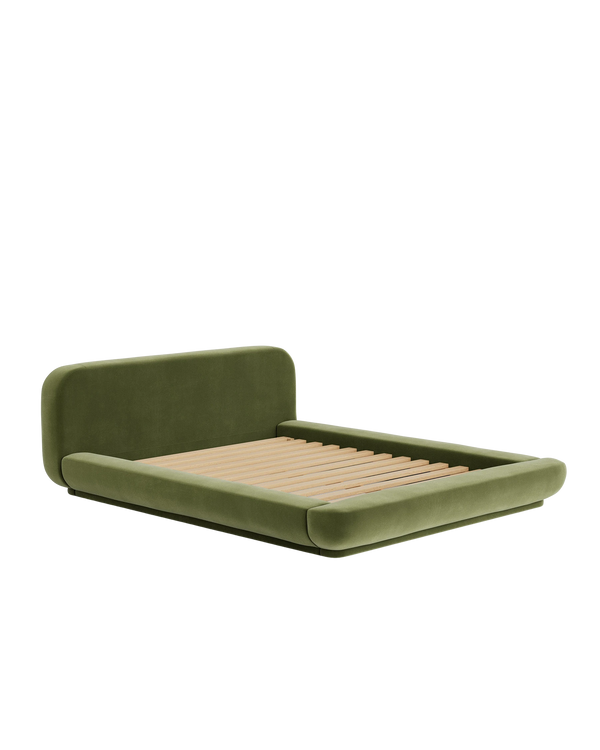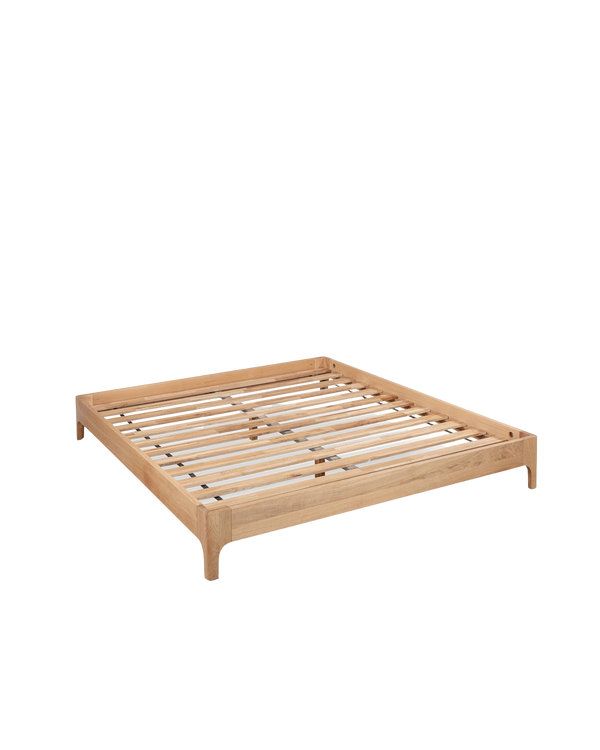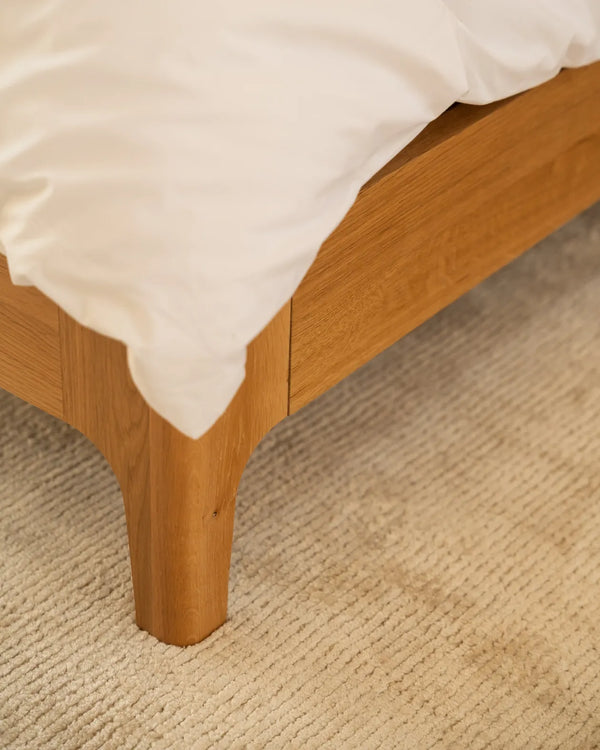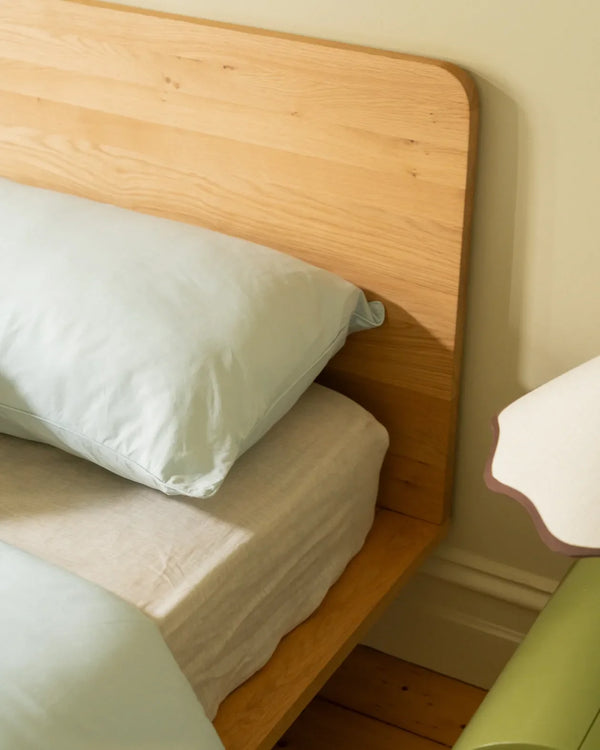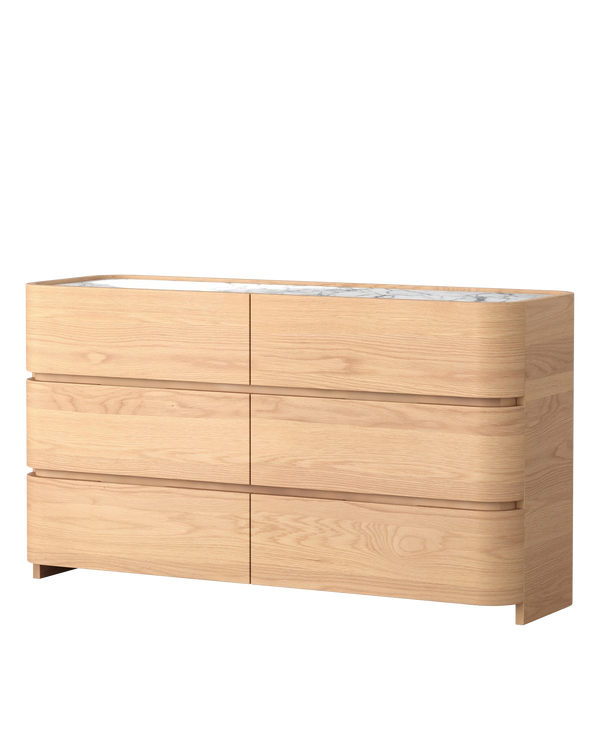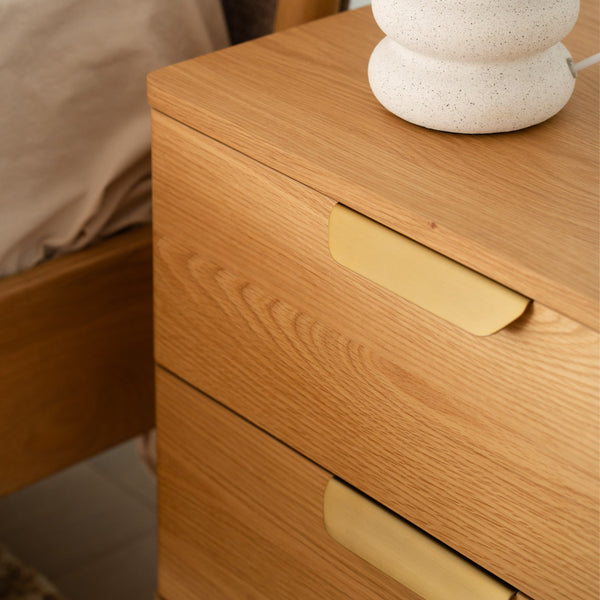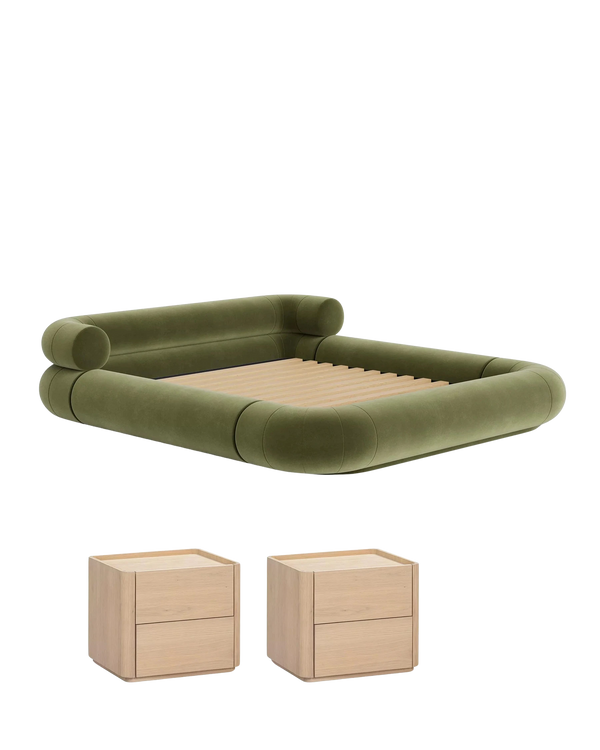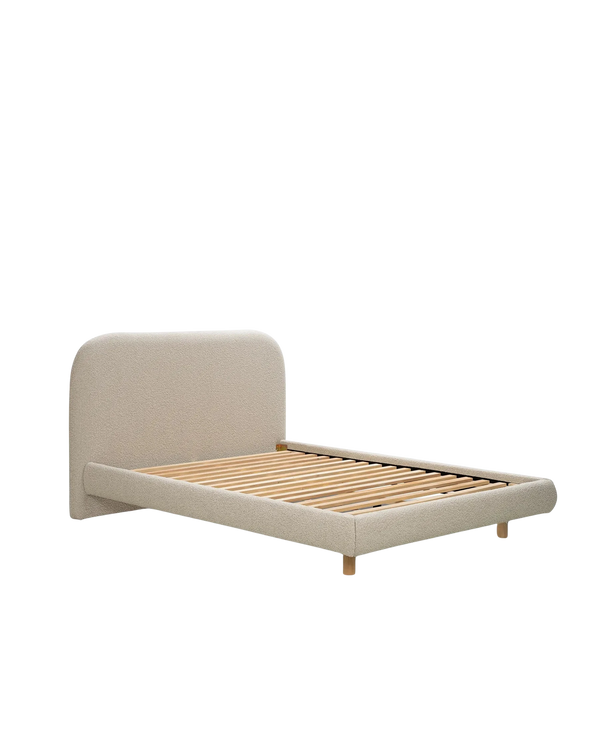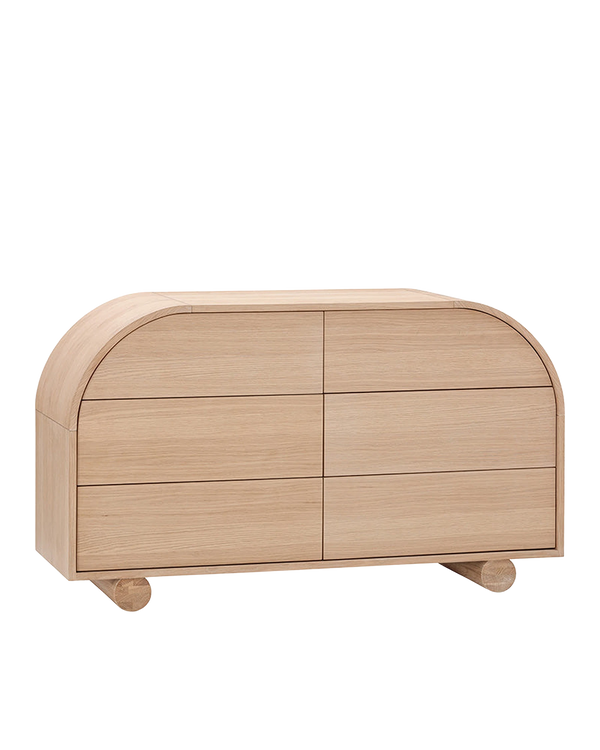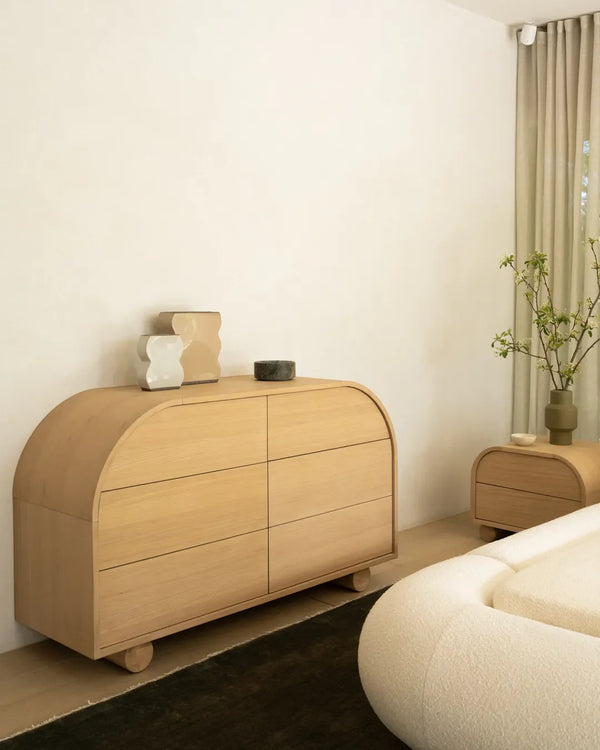
Bedroom Design Tips: How to Arrange Your Bedroom Furniture
October 21 2021 | Marcel Mena
Your bedroom is a calm oasis away from the rest of the world—a private space where you can retreat and relax at the day's end. Of all the rooms in the house, this is the one that you likely spend the most time in. In fact, the average person will spend 33 years of their life in bed.
Given how much time you spend in the bedroom, it’s worth investing some time and energy into ensuring this room is functional and aesthetically pleasing.
Read our guide to learn how to arrange bedroom furniture and design a space that will be both practical and soothing.
5 Quick Tips for How to Arrange Bedroom Furniture
You don’t have to be an interior design expert to create a beautiful sleeping space. Here’s how to design your bedroom like a pro.
1. Assess Your Space Before Buying Furniture
Before you start buying bedroom furniture, assess your space. How large is your bedroom? This will help you determine what size furniture to purchase and inform how many pieces you can reasonably fit without making the area look overstuffed.
For example, if you've always dreamed of having a four-poster canopy bed, that's great. But if your bedroom is tiny with low ceilings, you might find that an oversized bed doesn't look nice.
Break out the tape measure to determine the dimensions of your bedroom, including the height and length of each wall. This will help you make intelligent buying decisions for your room layout.
Further, consider what you will use the space for. If your bedroom is small, it's probably just for sleeping. Alternatively, if it's a bit larger and you work from home, you might use one corner of the room as a home office.
Also, consider who will be using the bedroom when determining functionality needs. If you're setting up kids’ bedroom furniture for a child’s room, you might want to leave space for a play area, for example.
2. Start With the Bed
The bed is the focal point of your sleeping space and takes up the most space. Start here. When selecting a bed frame, consider materials, color, and dimensions.
Natural wood tends to be an aesthetically pleasing and versatile material that conforms to various styles. You can also get wood in multiple stains and colors.
When it comes to dimensions, before buying, decide where you will position your bed. Emphasise functionality. If you like to lie in bed and watch television, you will likely want to leave room for a wardrobe to hold a TV across from your bed, for example.
The height of the bed is another consideration. If you want to create additional storage space in your bedroom, go for a higher frame that you can slip slim storage boxes underneath. If this isn’t necessary, a lower bed base is just as serviceable.
Finally, consider whether you want a bedhead or not. You can buy these separately, selecting from various materials, styles, and colors. If you're going to have a bedhead, make sure it complements the frame or base you've chosen.
3. Make the Most of Your Bedside Table
When figuring out where to position your bed, keep in mind that you'll likely want a bedside table next to it.
A small table with drawers is perfect for holding water, medications, glasses, and other essentials you may need. Opt for compact bedside tables with shelving or drawers for added storage.
When positioning your bedside table, make sure it won't interfere with traffic flow in the room. You want a clear path from the bed to the door or the bathroom, for example, without a table getting in the way.
If you’re wondering how to design a bedroom with a cohesive sense of style, the answer lies in the materials. If you have a wooden bed frame, choosing a nightstand or tables in matching wood will create a seamless aesthetic presentation.
4. Embrace Multipurpose Clothing Storage Pieces
In addition to serving as a sleeping space, your bedroom also has one other significant purpose—serving as a space to stash your clothes. There are many small bedroom ideas to add storage and functionality to your slumber space. The right chest of drawers or wardrobes will make it easy to access your garments.
When selecting these items, aim for a multifunctional purpose to make small spaces feel large.
For example, a low chest of drawers can also serve as a surface for holding books, cosmetics, or other personal items. If you want to watch TV in bed, you might position the chest of drawers across from the bed and place the TV on it.
Alternatively, if you have a more oversized bedroom, you might get a tall cupboard to hold your clothing and let it serve double-duty as a room divider.
Positioning a wardrobe with space behind it can create a cozy nook where you can read or work. If you work from home, you can even place a desk to create a compact home office.
5. Finish Off With Lighting Design, Floor Coverings, and Window Treatments
The above steps detail how to arrange bedroom furniture, covering the essential pieces you need: a bed, bedside table, and wardrobe or chest of drawers. However, it takes more than these basics to create the perfect sleeping space.
Lighting, floor coverings, and window treatments are the finishing touches that will create a cozy space. For lighting, again, emphasize functionality. Do you like to read in bed? Then it would help if you had a reading lamp on your nightstand.
When it comes to floor coverings, a small throw rug can be a great way to create a cozy space. You can also use floor coverings to differentiate distinct areas in the bedroom. For example, if you set up a desk in one corner as a mini office, set it apart with a small rug.
Finally, if your bedroom has windows, add curtains or shades to ensure privacy and keep out light when sleeping. A dark room is conducive to a better night’s sleep, so don’t forego this investment.
Final Thoughts on Arranging Bedroom Furniture and Decorating Your Bedroom
Your bedroom is a personal, private space. When it comes to designing this room, your personal preferences take top priority. Show off your style with the special attention you pay to everything from the bedding materials to wallpaper.
The above tips for how to design your bedroom and arrange bedroom furniture should help you focus on the practical, functional elements of your room. Implement these steps first and then move on to adding the personalized finishing touches. You'll soon have a snooze-worthy space where you can relax at the day's end.
Discover more designer bedroom ideas and if you need help choosing, decorating and arranging bedroom furniture, we have dedicated designers to help you make the right decisions for your bedroom here at RJ Living.

